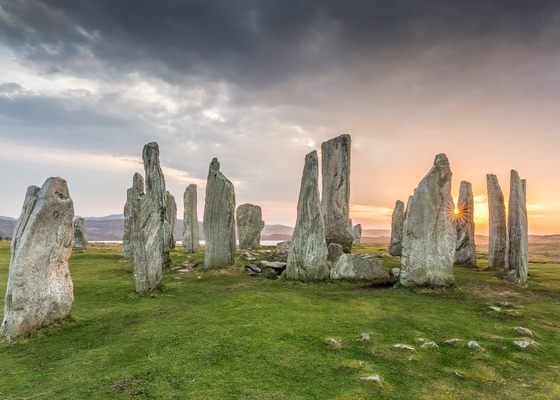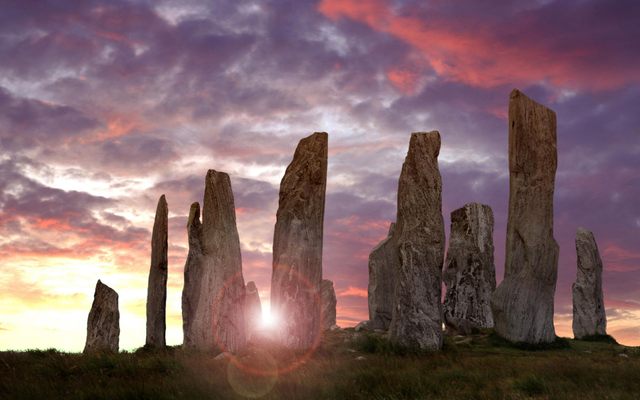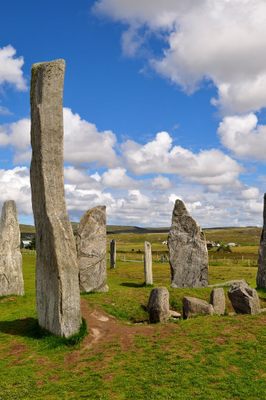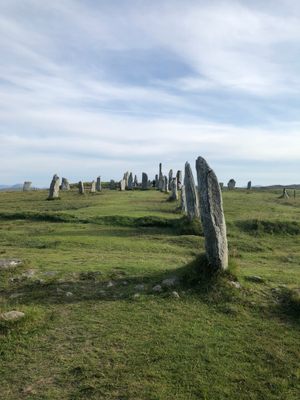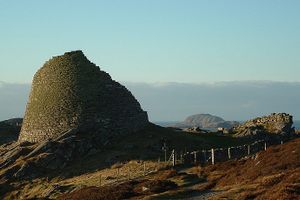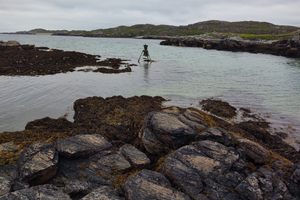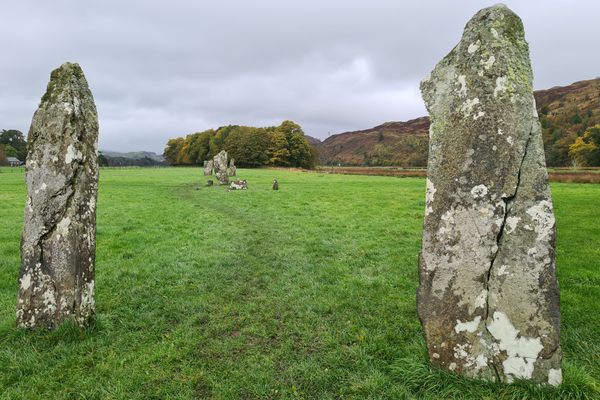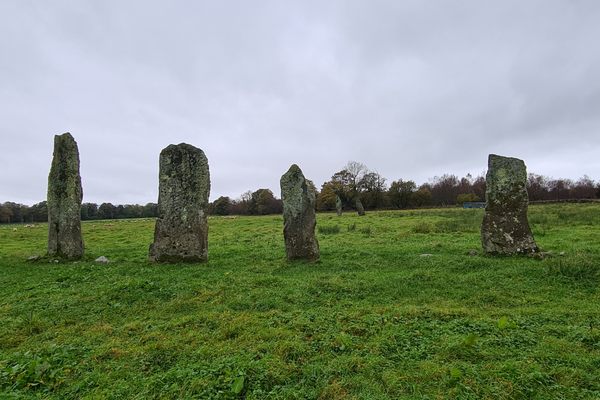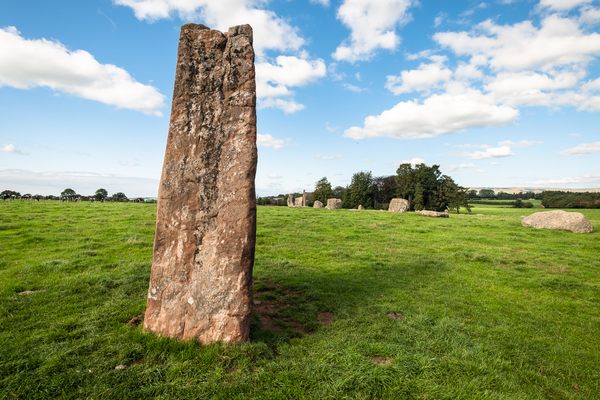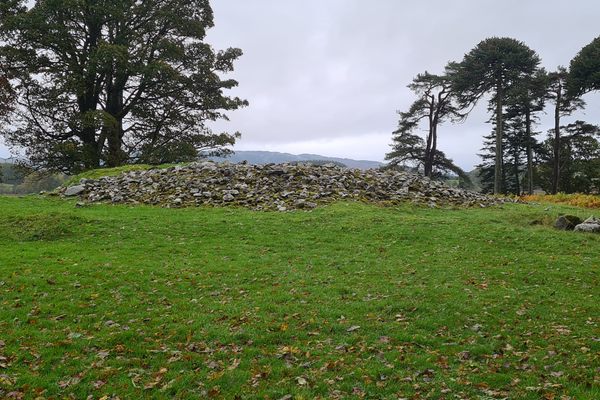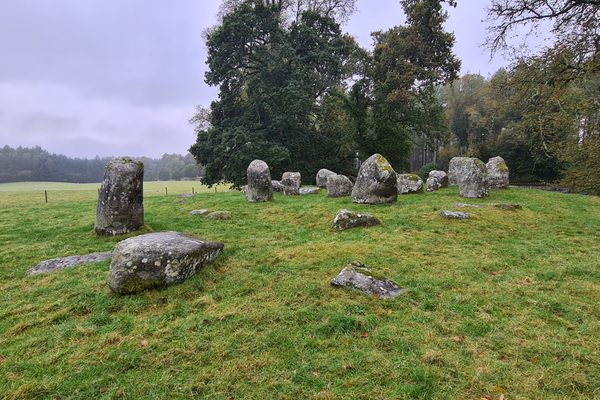About
Rows of monoliths stretch outward from this stone circle, forming a sort of rudimentary cross. A chambered tomb is nestled within the circle, as if being guarded by the stones. For thousands of years, people have been drawn to the mysterious 12-foot-tall chunks of Lewisian Gneiss, which have yet to fully reveal their secrets.
Neolithic people erected the Callanish Stones about 5,000 years ago. Though the stones served as a hub for ritual activities for at least a millennium, their exact purpose has been lost to history. The most prevalent theory, based on recent archaeological excavations, holds that the megaliths acted as some sort of astronomical observatory or a celestial calendar.
As with many prehistoric creations, the Callanish Stones are rich with legends and lore. One bit of local lore says the stones are petrified giants turned into stone for refusing to convert to Christianity. Another tale tells of a magic white cow that appeared at the site to save the islanders from starvation.
They’re older than Stonehenge but, unlike the world-famous megalithic construction, the Callanish Stones are accessible to the public. Those who are drawn to their ancient mysteries can freely wander among the stones and even touch the towering monoliths. Outlander fans may be particularly interested in laying their hands upon the stones—according to the series’ fandom, the TV version of the books used the Callanish Stones as inspiration for the fictional Craigh na Dun.
Visiting the stones is an enchanting experience regardless of the season. In the summer, they stand stoically beneath a sun that just barely sets, and in the darker months, the Northern Lights illuminate the night sky above them in a blaze of purple, green, and red hues.
Related Tags
Know Before You Go
You can visit the stones at any time for free. The visitor center cafe is open every day but Sunday, and its hours vary depending on the season (see its website for details). The stones are just over a 10-minute drive from Dun Carloway, another one of the island's many ancient attractions.
Flavors of Scotland: Beyond the Haggis
Smoked seafood, single malt whisky, and warm hospitality.
Book NowCommunity Contributors
Added By
Published
November 8, 2018
Sources
- https://en.wikipedia.org/wiki/Callanish_Stones
- http://www.callanishvisitorcentre.co.uk/index.php/features/history-of-calanais-stones
- https://www.historicenvironment.scot/visit-a-place/places/calanais-standing-stones
- https://www.bbc.com/news/uk-scotland-highlands-islands-18623672
- https://www.scotsman.com/news/strange-tales-from-6-sacred-stone-sites-of-scotland-1-4416563
- https://www.scotsman.com/lifestyle/secrets-of-standing-stones-at-calanais-to-be-revealed-1-4251064
- https://www.washingtonpost.com/archive/lifestyle/travel/1988/04/10/the-secret-of-the-stones/0123ee62-0081-42e4-8bfa-f0a83af47a52/?utm_term=.a497d4e11f27
